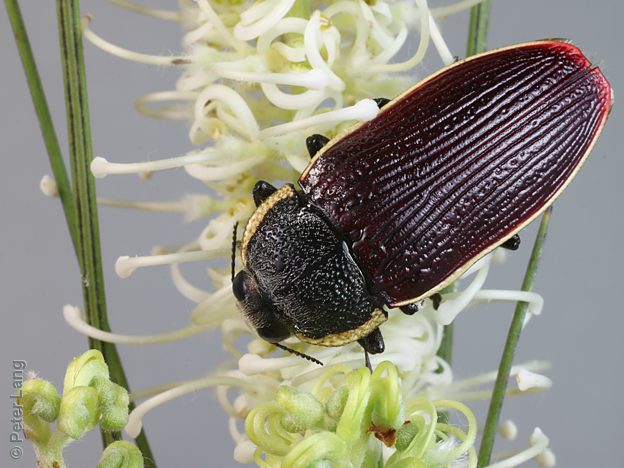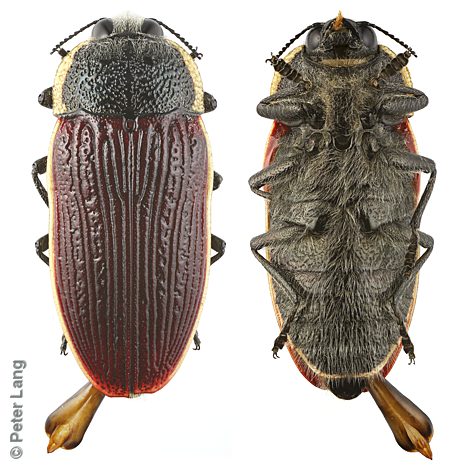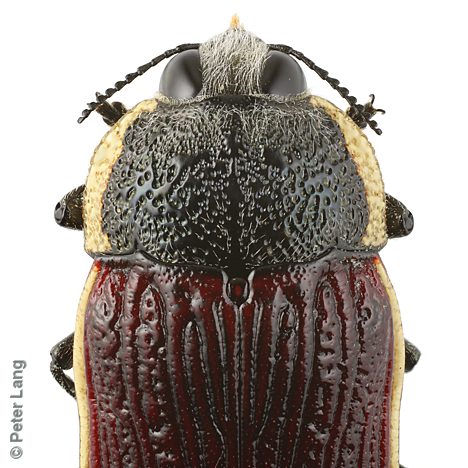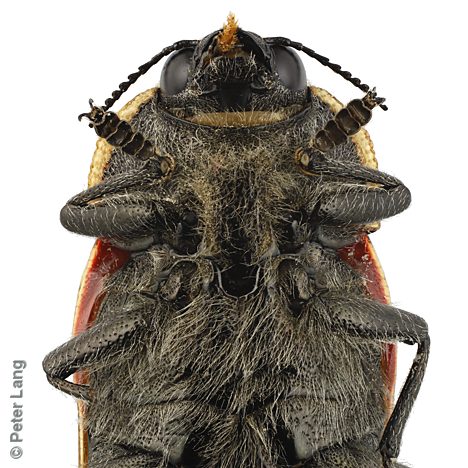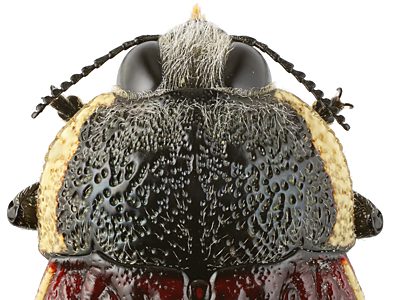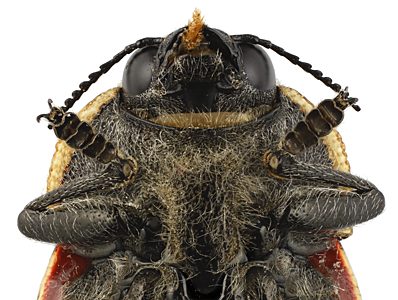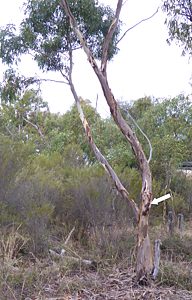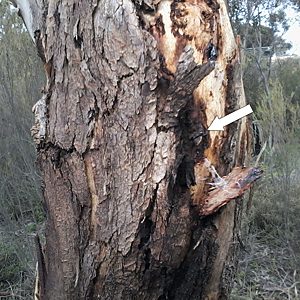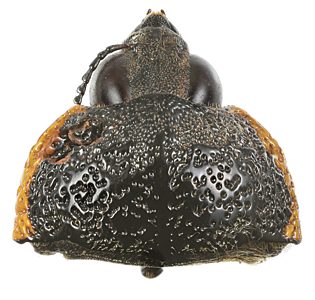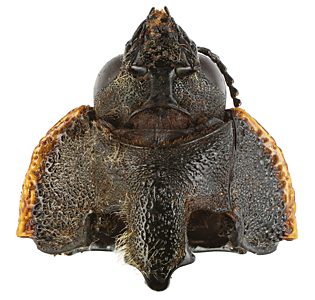Head with densely white-hairy frons; pale yellow margin on pronotum and elytra; pronotum mainly black, coarsely and irregularly pitted and thickened; elytra dark red; underside prominently hairy.
Temognatha flavocincta is a widely occurring species in temperate woodland and semi-arid mallee-heath areas. It appears to have declined significantly after settlement and Tepper 1887 writes that it: 'used to be very plentiful some 30 years ago among the flowers of the taller trees of Eucalyptus rostrata or Red Gum) now E. camaldulensis), but is now rare.' See further details in 'Host plant notes' at the bottom of this page.
| Legend | records | count of breeding adults, pupae and larvae |
| sites | count of major sites (unique 10 km grid cells +/- some distinct approximate localities) |
| adult | live = extracted alive; dead = extracted dead as intact or fragmentary remains; ex billet = reared and emerged from stored sections of host; ex pupa = reared from sampled pupa |
| pupa | extracted pupa; pupa ex larva = reared pupa from larva |
| larva | extracted larva (any stage including prepupa) |
| gall (only) | hatched or unhatched gall identified by form and position rather than contents |
| Plant names in green are hyperlinked to a matching host species page with plant photos. |
Dead remains of an adult Temognatha protruding from an exit hole were discovered by A.M.P. Stolarski in July 2016. They were about 1.5m above ground in the trunk of a Eucalypt situated 9.6 km WSW of Wirrega on Dukes Highway between Keith and Bordertown in the SE Region of SA. The head and pronotum of the beetle had become embedded by subsequent growth of bark tissue and kino exudation and were the only intact remains that could be extracted. Based on a sample of foliage and site photos, I was able to tentatively identify the host as Eucalyptus leucoxylon. Subsequently I visited the site, located the tree, re-photographed it and confirmed its identity as E. leucoxylon ssp. stephaniae supported by a voucher specimen (P.J.Lang 3131) submitted to the State Herbarium of SA (AD).
After cleaning in concentrated KOH solution, the remains were examined and compared with SA Temognatha species of a similar size. They were found to uniquely match Temognatha flavocincta, based on: the pale yellowish margins to the pronotum that are terminated by a narrow dark band on their posterior edges; and the rugose pronotum surface with coalescing punctae and sparse coarse hairs.
Eucalyptus leucoxylon ssp. stephaniae is the first larval host record for Temognatha flavocincta in SA and the second for the species. The only other breeding record reported for this species is that of Goudie 1923 who found two dead non-emerged adults on splitting the 6 inch (15 cm) diameter trunk of a Eucalyptus leucoxylon sapling, presumably at Maldon in Victoria. It is notable that both the known breeding records are in E. leucoxylon, and from young trees.
| ¹ Legend | regions | SA State Herbarium regions (map)
EA: Eastern, EP: Eyre Peninsula, FR: Flinders Ranges, GT: Gairdner-Torrens, KI: Kangaroo Island, LE: Lake Eyre, MU: Murray, NL: Northern Lofty, NU: Nullarbor, NW: North-Western, SE: South-Eastern, SL: Southern Lofty, YP: Yorke Peninsula |
| size | The ellipse is the correct size when printed, indicative on a desktop screen, and likely to be wrong on a mobile device. |
